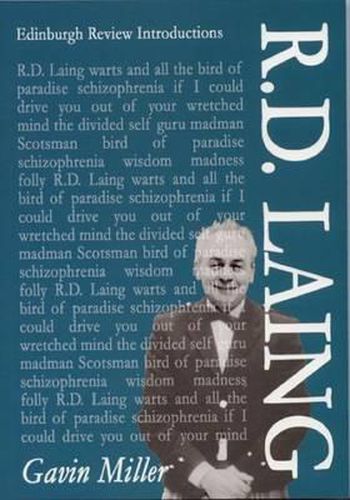Readings Newsletter
Become a Readings Member to make your shopping experience even easier.
Sign in or sign up for free!
You’re not far away from qualifying for FREE standard shipping within Australia
You’ve qualified for FREE standard shipping within Australia
The cart is loading…






The book explores the influence, depth, validity, and context (both national and international) of Laing’s work as well as his fall from grace. Miller traces Laing’s tumultuous life and career, as he moved from the forefront of humane, and humanist, psychiatry to a position of notoriety. Later in life, he was an alcoholic, professionally unlicensed, and as disturbed, at times, as anyone he had ever treated. His work also descended into near-madness – implying, for example, that his problems could be traced to the hostility of his mother’s uterus, eight days after he was conceived. It is hard to forget such a figure; but it is easy to overlook the radical challenge to psychiatry of his earlier work and ideas. Since Laing refused to view mental illness in biomedical/clinical terms, he has often been labeled as part of the so-called ‘antipsychiatry’ movement, alongside figures such as David Cooper, Thomas Szasz and Michel Foucault. Moreover, the Langham Clinic in London (1962-1965), a therapeutic community founded by Laing, the hierarchical distinction between physicians and patients was essentially eliminated. However, Laing strongly rejected this label as being against psychiatry. He never denied that mentally ill people are in need of help – he simply did not believe that conventional psychiatry provided the answer. In particular, he opposed the use of lobotomies, ECT and the dehumanizing effects of incarceration in psychiatric hospitals. Much attention has been paid to the psycho-biographical aspects of Laing’s life. He seems to have been raised in the kind of family he would later come to regard as conducive to schizophrenia. Although his upbringing gave Laing a motive and material for his theories, it did not give him the intellectual skills to analyze his own experience. While some contend that Laing was a charlatan and a self-publicist, this book shows, though, that there are many good reasons why conventional psychiatric diagnosis, care and treatment may be challenged.
$9.00 standard shipping within Australia
FREE standard shipping within Australia for orders over $100.00
Express & International shipping calculated at checkout
The book explores the influence, depth, validity, and context (both national and international) of Laing’s work as well as his fall from grace. Miller traces Laing’s tumultuous life and career, as he moved from the forefront of humane, and humanist, psychiatry to a position of notoriety. Later in life, he was an alcoholic, professionally unlicensed, and as disturbed, at times, as anyone he had ever treated. His work also descended into near-madness – implying, for example, that his problems could be traced to the hostility of his mother’s uterus, eight days after he was conceived. It is hard to forget such a figure; but it is easy to overlook the radical challenge to psychiatry of his earlier work and ideas. Since Laing refused to view mental illness in biomedical/clinical terms, he has often been labeled as part of the so-called ‘antipsychiatry’ movement, alongside figures such as David Cooper, Thomas Szasz and Michel Foucault. Moreover, the Langham Clinic in London (1962-1965), a therapeutic community founded by Laing, the hierarchical distinction between physicians and patients was essentially eliminated. However, Laing strongly rejected this label as being against psychiatry. He never denied that mentally ill people are in need of help – he simply did not believe that conventional psychiatry provided the answer. In particular, he opposed the use of lobotomies, ECT and the dehumanizing effects of incarceration in psychiatric hospitals. Much attention has been paid to the psycho-biographical aspects of Laing’s life. He seems to have been raised in the kind of family he would later come to regard as conducive to schizophrenia. Although his upbringing gave Laing a motive and material for his theories, it did not give him the intellectual skills to analyze his own experience. While some contend that Laing was a charlatan and a self-publicist, this book shows, though, that there are many good reasons why conventional psychiatric diagnosis, care and treatment may be challenged.